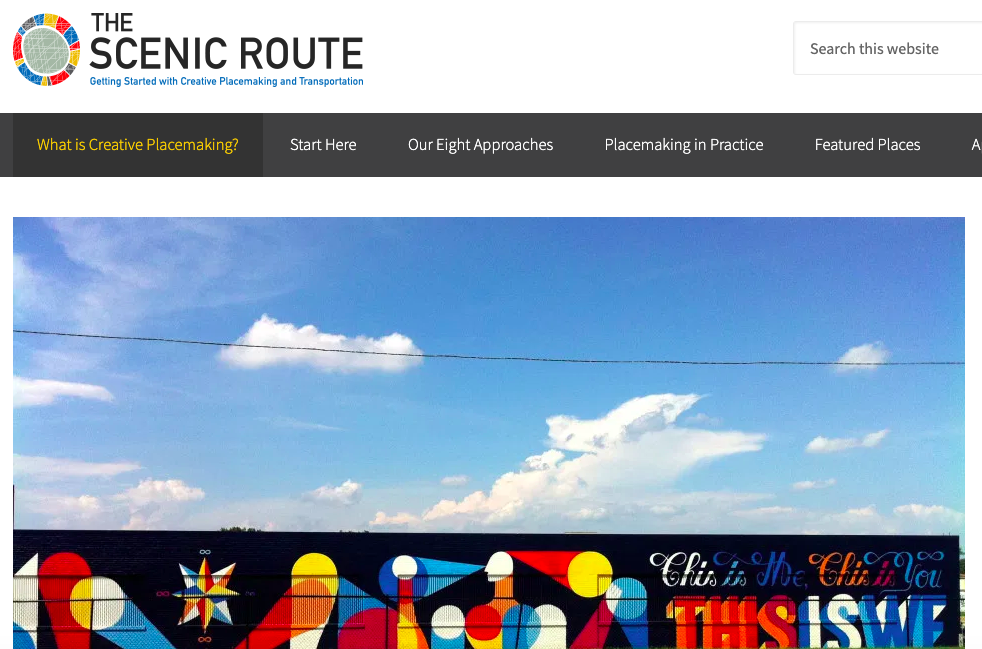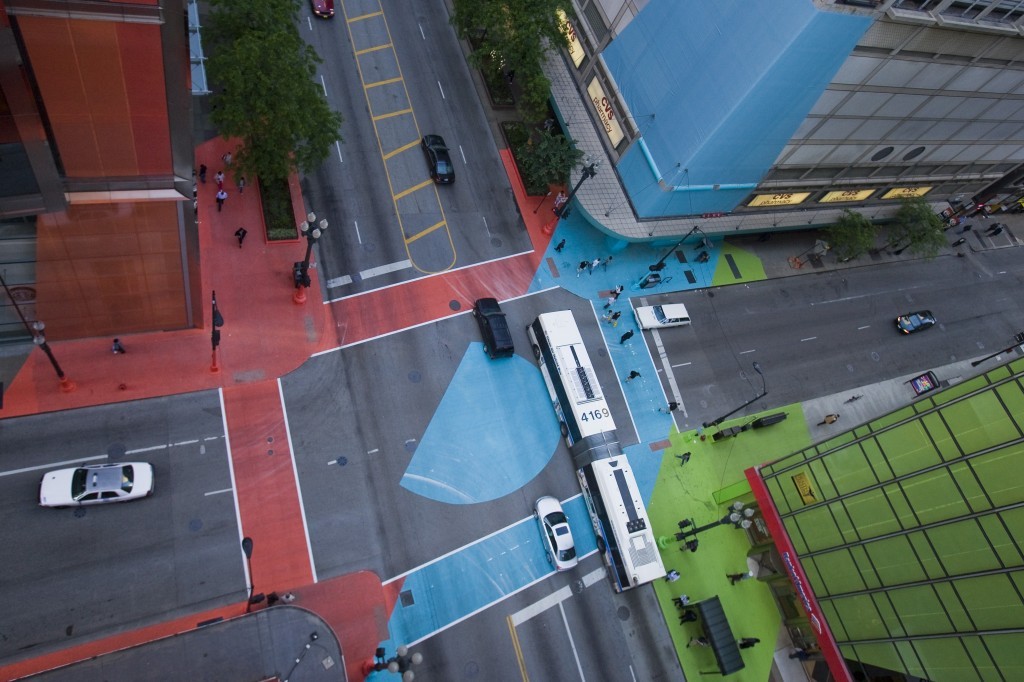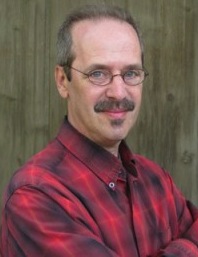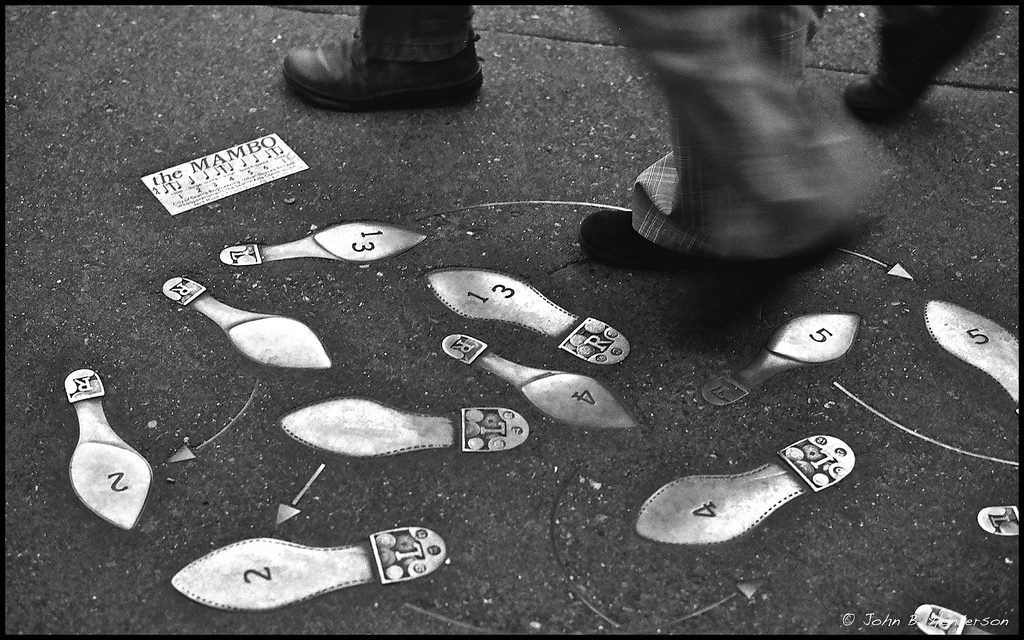
The intersection of arts, culture and infrastructure: why transportation agencies should embrace “creative placemaking”

A Members-Only Preview of T4America’s Forthcoming Arts & Culture Resource
When arts and culture collaborations include a deliberate emphasis on community values and assets, they fall under an umbrella known as creative placemaking. In the transportation context, creative placemaking is an approach that deeply engages arts, culture, and creativity — especially from underrepresented communities— in planning and design so that the resulting infrastructure project better reflects and celebrates local culture, heritage and values.

T4America Midwest Organizer Erin Evenhouse
This post was written by Erin Evenhouse, T4America Midwest Outreach Manager, and author of our forthcoming guide to creative placemaking
This fall, Transportation for America will be releasing a new resource exploring examples, unpacking successful strategies, and establishing a suite of approaches for working with members of your community to put arts and culture to work for you; to help your region create the next great story of a transportation project with payoffs for your local economy, social cohesion, and culture.
We’re still in the throes of developing this resource but we want our members to know about it first and help with feedback along the way. If you’re interested in hearing more as we develop it, email erin.evenhouse@t4america.org with a short note and we’ll reach out directly sometime this fall.
The crossroads of transportation planning, arts and culture

Jack Becker, Forecast Public Art
Transportation for America is developing new tools and approaches to tap community arts and culture and improve transportation and development projects at the same time. Sound like a stretch? A conversation with Jack Becker, executive director + principal of Forecast Public Art, helped changed my mind on the relationship between these topics. Jack and I bonded over our respective fields because like transportation policy, public art isn’t always well understood.
“There’s a difference between art in public places and public art,” he says. “The field is evolving and it’s much more about creating something that fits in a local context than these policies give room for. Consider fireworks: I would call that public art. How many small towns already have a public art program and don’t even know it?”
T4A’s research found that many public agencies with a public art program have rigid processes in which a percentage of funding can be used to commission specific works on selected and vetted sites. This typically plays out by locating a place that could use a little something and commissioning art. Done well, these projects are valuable additions; done poorly, the result can be dubbed “plop art,” a pejorative term for art in the public way that doesn’t resonate or seem to fit into its environment.

Color Jam in Chicago. Photo by Kevin Shelton, courtesy Chicago Loop Alliance.
Many professionals in Jack’s field and beyond feel that this setup sells short both art and the important role it can play in the community. He believes the key to harnessing art and creative processes is to embed artists into the decision-making process.
This is exactly what the City of St. Paul, Minnesota did in their planning and economic development department in the 1980’s. Matching department consulting funds dollar-for-dollar with a now-defunct NEA grant program, the city provided $10,000 to three artists to join the planning, economic development and public works departments for three months. The city provided the artists with a desk, a phone, and exposure to how the departments worked.
In the first month, the artists learned day-to-day processes and got to know their peers. In the second month, they looked at projects to make suggestions (e.g., repurposing materials from a previous work site to construct a railing for a new bridge). And for their last month, artists provided recommendations (e.g., commissioning a welder to build that railing). The fresh energy and new ideas introduced by the artists were received so well that St. Paul continues to fund an artist-in-residency in its public works department. Its successful spin-offs include a now standalone program to embed lines of poetry into new sidewalk tiles.
“You can give an artist a plot of land, or you can give them your entire city as a canvas,” Jack says. He acknowledges that the latter is not without risk because the final results are less predictable, which is why regular communication is key, and temporary installations or pilot projects can be a good first step, as our forthcoming resource will illustrate.
But the impact of integrating the arts and artists into the process are more profound to him. Jack Becker has seen artists serve as professional problem-solvers, change how people think and help illuminate a transformative potential for public leadership. The arts inspire and unite people, change perceptions and contribute new ideas, all of which can be helpful when you’re dealing with the complex ecosystem of a city or town.

One of John Mackie’s dance steps installations in Seattle. Creative Commons Flickr photo by John Henderson. View on Flickr
Involvement through local arts & culture
The idea behind creative placemaking is that this is all the more true when those artists work in service to local community members, or are members of the community themselves. Arts-based collaborations between local units of government and nonprofit or community-based partners are becoming more popular. For one, national funders are betting on the theory that bringing local artists and local culture into the process is an important — and often overlooked — piece of the puzzle for building better places. There are links to the commonly recognized approaches promoted by organizations like the Project for Public Spaces, but creative placemaking also has roots in longstanding community based arts practices, which leverage arts participation — particularly by low-income residents and people of color— as a transformative process to empower people, foster new relationships, improve culture, and ultimately catalyze positive social change.
It involves a lot of brainstorming, testing, and trying new things along the way, which is far from the typical planning document that’s finalized before implementation and generally remains static for years at a time. Ultimately, Jack says, artists and local governments make natural partners and can do great things when they work hand-in-hand, because they both play the same connecting role.
“Expose artists to the stories of the community and build their relationship with what’s happening, and they can use their creative process to raise the profile and value of your work and your community.”
Interested in hearing more about creative placemaking in the weeks to come? Email erin.evenhouse@t4america.org with a short note and we’ll ensure you don’t miss a thing.



